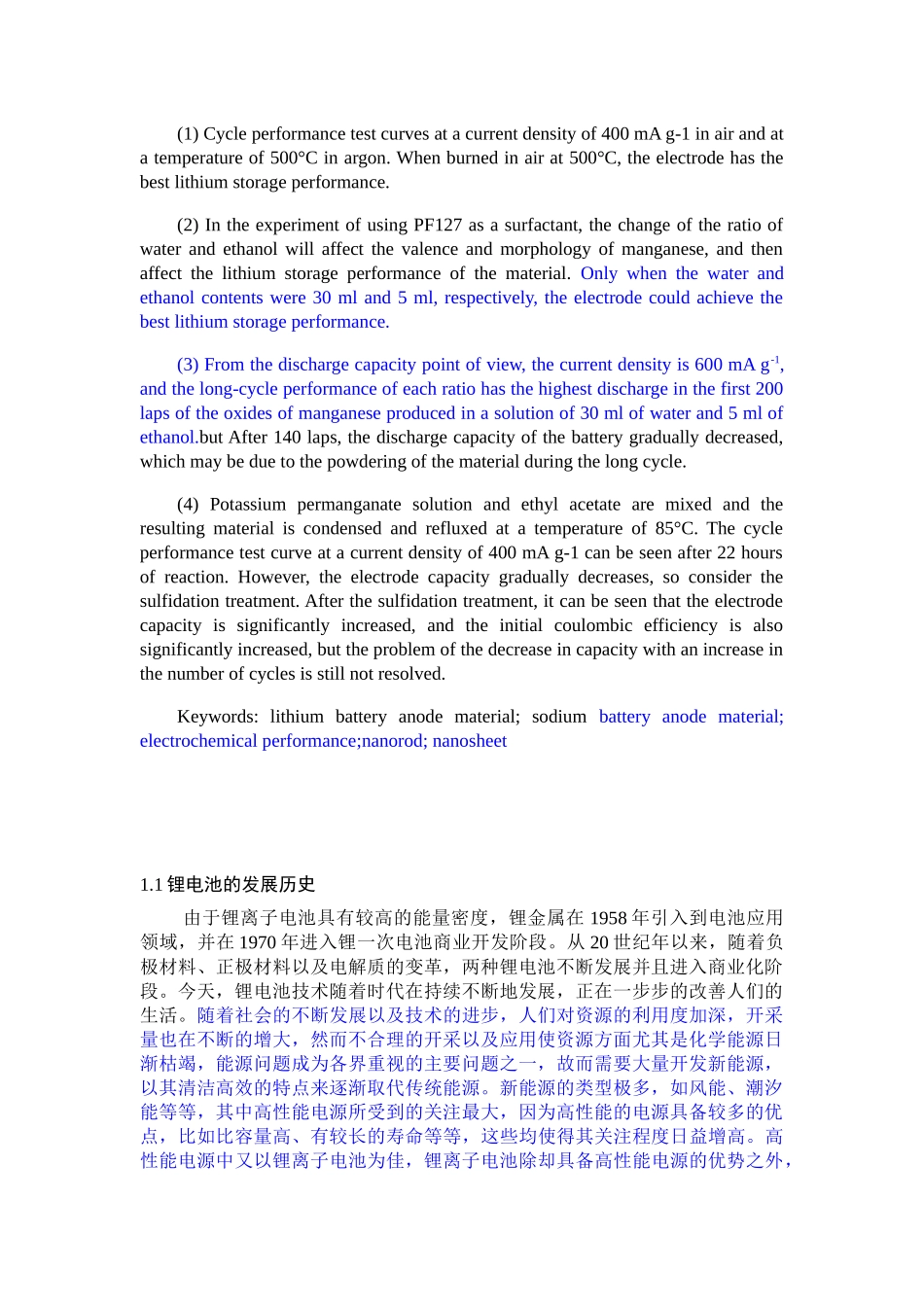锰基复合电极的制备及其电化学性能研究摘要:使用水热法在 160 ℃下制备二氧化锰的纳米棒状结构。只利用高锰酸钾和乙酸乙酯两种原料,采用溶剂热法制得二氧化锰纳米片材料,分别利用扫描电镜(SEM)、X 射线衍射(XRD)、电池充放电及循环测试等测试手段对材料的形貌、结构做出表征。运用恒电流充放电的方法对材料的电化学性能进行测试。(1) 在空气中和在氩气中 500℃温度下烧,400 mA g-1电流密度下的循环性能测试曲线。在空气中 500℃烧时,其电极的储锂性能最好。(2)在以 PF127 为表面活性剂的实验中,水和乙醇的比例变化会影响锰的价态和形貌,进而影响材料的储锂性能。只有水和乙醇含量分别为 30ml 和 5ml 时,电极方能达到最佳的储锂性能。(3)从放电容量方面来看,电流密度为 600 mA g-1中,各比例的长循环性能在 30 ml 水和 5 ml 乙醇为溶液时所制得的锰的氧化物在前 200 圈具有最高的放电容量,但是在 140 圈以后,电池的放电容量逐渐减低,这可能是在长循环过程中,材料出现粉化情况造成的。(4)高锰酸钾水溶液和乙酸乙酯混合,在 85℃温度下冷凝回流所制得的材料,400 mA g-1电流密度下的循环性能测试曲线可以看出,在反应了 22 小时后,但电极容量逐渐降低,所以考虑进行硫化处理。硫化处理后可以看出电极容量明显提升,初始库伦效率也明显提升,但仍然未解决容量随着循环次数的增加而减小的问题。关键词:锂电池负极材料;钠电池负极材料;电化学性能;纳米棒;纳米片Abstract: The nanorod-like structure of manganese dioxide was prepared by hydrothermal method at 160 °C. Using only potassium permanganate and ethyl acetate as raw materials, MnO2 nanosheets were prepared by solvothermal method. The scanning electron microscopy (SEM), X-ray diffraction (XRD), battery charge and discharge, and cyclic testing were used. Characterize the topography and structure of the material. The electrochemical properties of the material were tested using a galvanostatic charge-discharge method.(1) Cycle performance test curves at a current density of 400 mA g-1 in air and at a temperature of 500°C in argon. When burned in air at 500°C, the ele...


